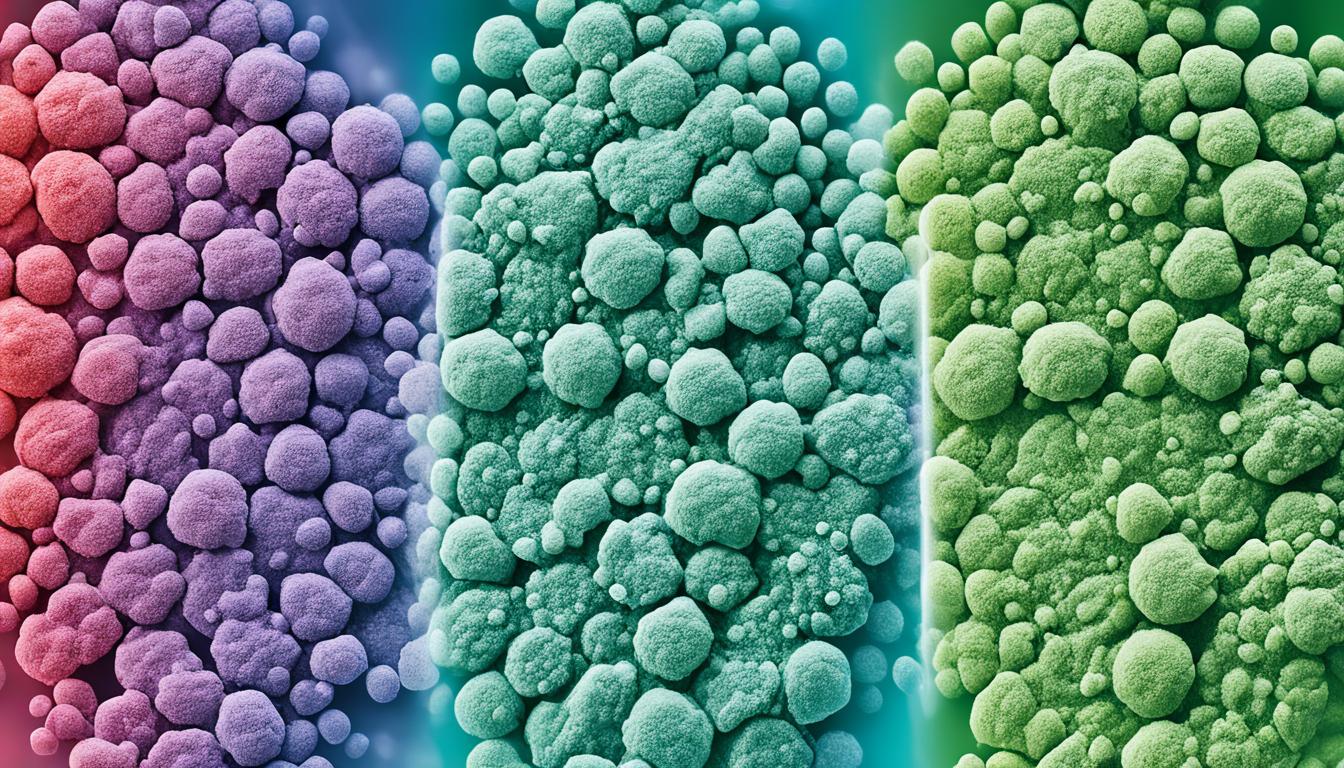Neurofibromatosis is a group of genetic disorders. It affects the nervous system. This causes tumors on nerve tissue in the brain, spinal cord, and nerves. It can significantly impact a person’s health and life.
There are three types of neurofibromatosis: NF1, NF2, and schwannomatosis. NF1 is often found in childhood. NF2 and schwannomatosis are found in early adulthood. Each type has its own features and symptoms.
The symptoms of neurofibromatosis differ from person to person. Some have mild symptoms. Others face more serious issues. Symptoms can include hearing loss, learning problems, heart issues, vision loss, and severe pain. It can greatly affect someone’s life, needing continuous medical care.
Key Takeaways:
- Neurofibromatosis is a genetic disorder that causes tumors to form on nerve tissue
- There are three types of neurofibromatosis: NF1, NF2, and schwannomatosis
- Symptoms can vary. But, hearing loss, learning issues, and vision problems are common
- Treatments include surgery and medication. Research on new therapies like stem cell therapy continues
- Early diagnosis and a team approach to treatment are key for neurofibromatosis patients
Types and Symptoms of Neurofibromatosis
Neurofibromatosis is a group of genetic disorders. They bring various symptoms and issues. There are three types: Neurofibromatosis 1 (NF1), Neurofibromatosis 2 (NF2), and Schwannomatosis. Each type has unique traits and effects.
Neurofibromatosis 1 (NF1)
Neurofibromatosis 1, or NF1, often shows up in childhood. It comes with many café-au-lait spots, light brown skin patches. There’s also freckling in key areas and Lisch nodules on the eye’s iris. NF1 includes benign tumors called neurofibromas under or on the skin.
Those with NF1 might have bone problems or scoliosis. They may also deal with optic glioma, learning issues, a large head, and short height.
Neurofibromatosis 2 (NF2)
Neurofibromatosis 2, NF2, is rarer. It features tumors on hearing and balancing nerves. These can cause hearing loss. NF2 may also lead to other nerve tumors, bringing dizziness, balance issues, vision trouble, and more.
Schwannomatosis
Schwannomatosis is another rare form that shows up after 20. It doesn’t affect hearing. It causes chronic pain, weakness, and loss of muscle. This condition is due to benign nerve tumors pressuring surrounding nerves.
| Neurofibromatosis Type | Characteristic Features |
|---|---|
| Neurofibromatosis 1 (NF1) | Café-au-lait spots, freckling, Lisch nodules, neurofibromas, bone deformities, optic glioma, learning disabilities |
| Neurofibromatosis 2 (NF2) | Bilateral vestibular schwannomas, dizziness, poor balance, vision problems, weakness or numbness in the extremities, cataracts |
| Schwannomatosis | Chronic pain, numbness or weakness, loss of muscle, schwannomas |
Knowing these types and their signs helps with diagnosis and care. People with neurofibromatosis require special medical attention. This support can improve their life quality.
Diagnosis, Causes, and Complications of Neurofibromatosis
Neurofibromatosis is a complex genetic disorder caused by mutations in specific genes. Which genes are involved depends on the type. For example, the NF1 gene causes NF1, NF2 gene causes NF2, and schwannomatosis may result from the SMARCB1 and LZTR1 genes. These mutations disrupt cell growth and function, leading to nerve tissue tumors.
It is inherited in a dominant pattern. This means if a parent has the mutation, there is a 50% chance their child will too. Still, it can also happen spontaneously. A genetic test can confirm the diagnosis and pinpoint the gene mutations.
The effects of neurofibromatosis vary. They depend on tumor location and size. Some common issues include seizures, learning problems, and developmental delays. Tumors might lead to visible signs like café-au-lait spots and neurofibromas. They can also affect bone, leading to deformities.
Vision issues, heart problems, and breathing troubles can also occur. People with this disorder have a higher risk of certain cancers too.

